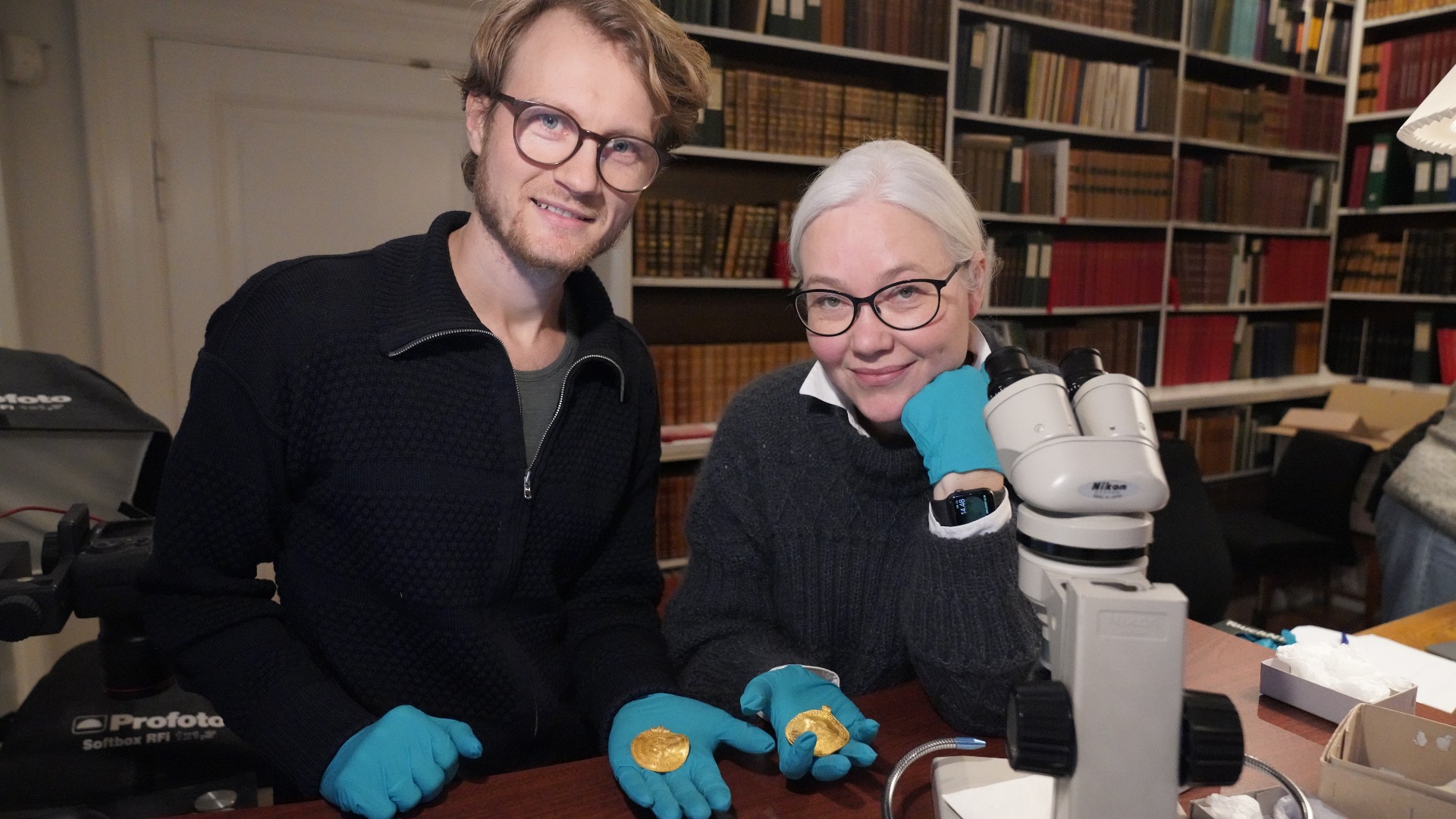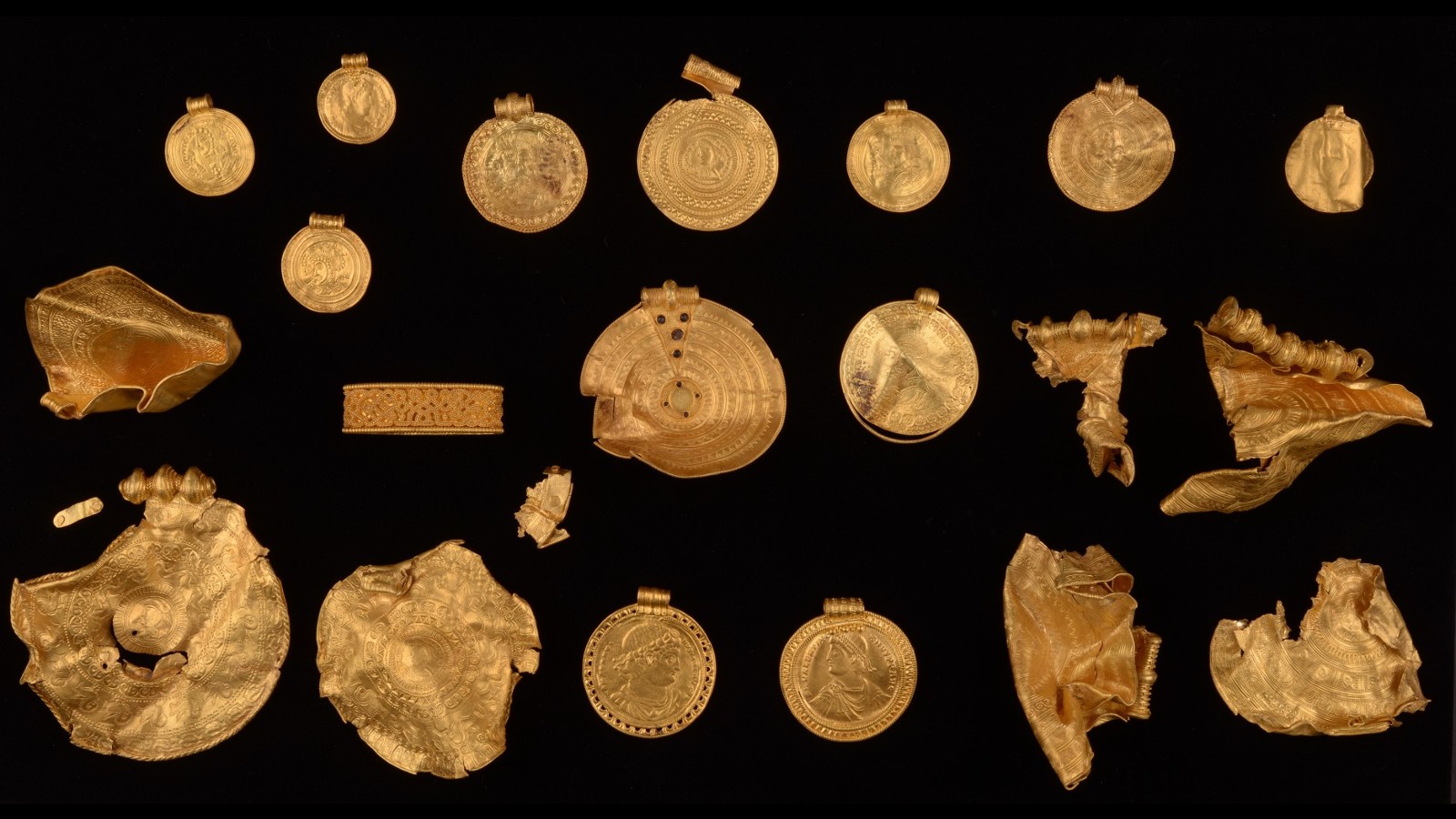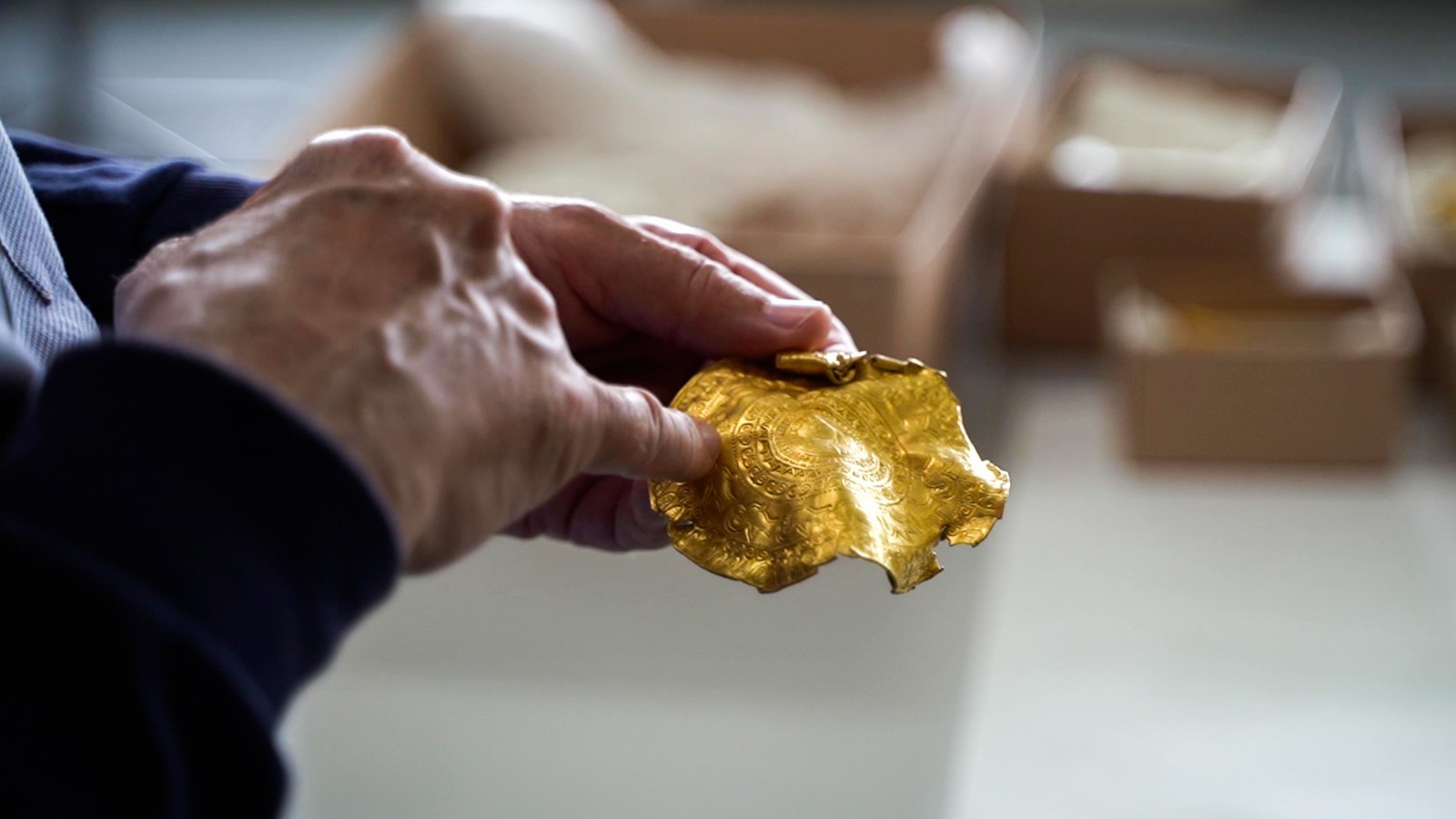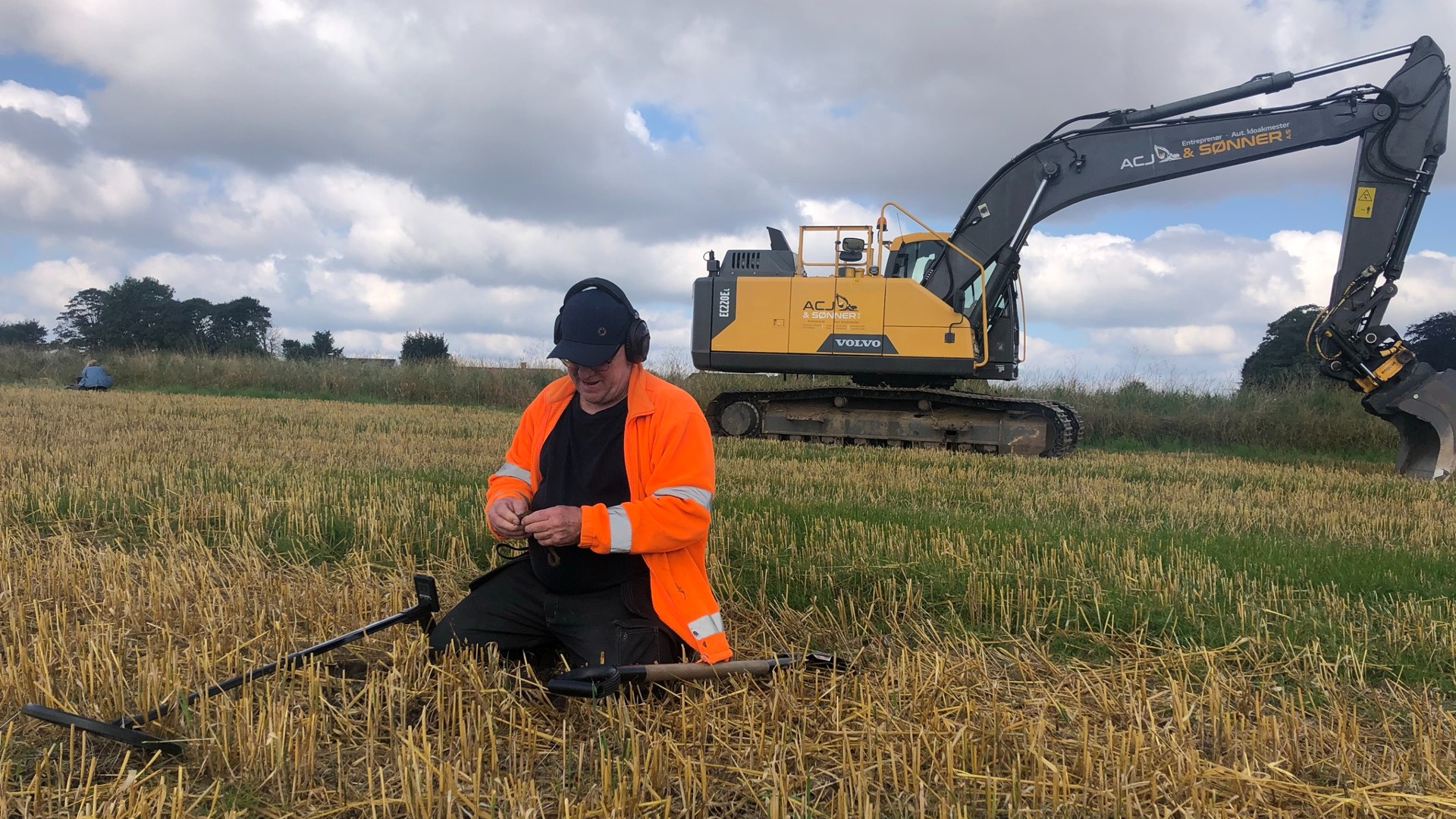A gold pendant recently unearthed in Denmark bears the earliest known inscription featuring the Norse god Odin.
Archaeologists think the pendant — which is technically known as a bracteate and made of thin, stamped gold — dates to the fifth century A.D., making it 150 years older than the previous oldest known artifact mentioning Norse mythology.
“It is the first time in the history of the world that Odin’s name was mentioned,” Lisbeth Imer (opens in new tab), a runologist and writing expert at the National Museum of Denmark, told Live Science. “This means that Norse mythology can now be dated all the way back to the early fifth century.”
The inscription, in letters called runes, says, “He is Odin’s man” and the name “Jaga” or “Jagaz” in an early form of the Norse language. It is thought to refer to its owner, an Iron Age chieftain or king, who may have claimed the god as an ancestor.
“I think that the wording refers to the central motif depicting a man with a horse, portraying the local magnate or king, who presents himself a descendant of the king of gods and the god of kings, Odin,” Imer said. “We have other literary evidence that the kings liked to present themselves as descendants of gods.”
Related: 2 Viking swords buried upright might have connected the dead to Odin and Valhalla

Imer and her colleague, linguist Krister Vasshus (opens in new tab), spent more than a year deciphering the runic inscription on the bracteate, which was part of a stunning gold hoard unearthed in Jutland, Denmark, in 2021. The trove contained almost 2.2 pounds (1 kilogram) of gold and is now known as the “Vindelev hoard” after a nearby town.
Norse gods

In Norse mythology, Odin was the king of the gods; the god of death, wisdom, magic and runes; and the “All-father” of both gods and mortals. Although the Norse pantheon featured dozens of deities, Odin was one of the three main gods worshipped in the Norse religion, alongside Thor and Frey.
Odin is often portrayed with only one eye, because according to legend, he gouged out his other eye to gain incomparable knowledge. He is also the Norse form of the Germanic god Wotan and the Anglo-Saxon god Woden, although they both seem to have had two eyes.

Imer said the runic inscription seemed to be more weathered than the rest of the pendant, possibly because it was a holy inscription that was touched to “gain power.”
“It was a time when religion was more integrated into daily life,” she said in an email. “The leaders of society were responsible for cultic activities and performing rituals to uphold a good relationship with the gods.”
It’s difficult to interpret the tiny runes, however, because the words run into one another without spaces and because the name “Odin” is spelled as “Wodnas” and not in the regular form “Wodinas” — possibly because it is written in an early form of Norse called Proto-Norse, Imer said.
Proto-Vikings

Archaeologists think the Norse descended from North Germanic peoples who migrated into Denmark and other Scandinavian countries from about the fourth to the first centuries B.C. After the eighth century A.D., the seafarers among them became famous as Viking raiders in Europe; they established colonies in parts of Britain, France, Iceland and Greenland for a time. Some Vikings even made it to the Faroe Islands and Newfoundland in what’s now Canada.
The Vindelev hoard, however, comes from a “proto-Viking” age before the Norse were known (and feared) as Vikings.
The inscription’s discovery has already influenced the interpretation of inscriptions on other gold bracteates; more than 1,000 have been found around northern Europe, and more than 200 of them have inscriptions.
“The inscription on the Odin bracteate is actually copied onto one of the other bracteates from Vindelev with a slightly different motif,” Imer said. “But the carver who copied the inscription misunderstood the wording, so in many places he just carved some haphazard strokes and lines.”
It also seems that the copied bracteate was stamped from the same die as another found in 1852 on the Danish island of Funen and given to the National Museum, although its inscription was never deciphered.
“So, the National Museum has been in possession of an inscription with the word Odin on it for 170 years — but we didn’t know until recently,” Imer said.
Stay connected with us on social media platform for instant update click here to join our Twitter, & Facebook
We are now on Telegram. Click here to join our channel (@TechiUpdate) and stay updated with the latest Technology headlines.
For all the latest For Top Stories News Click Here

